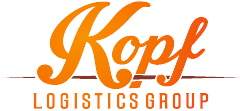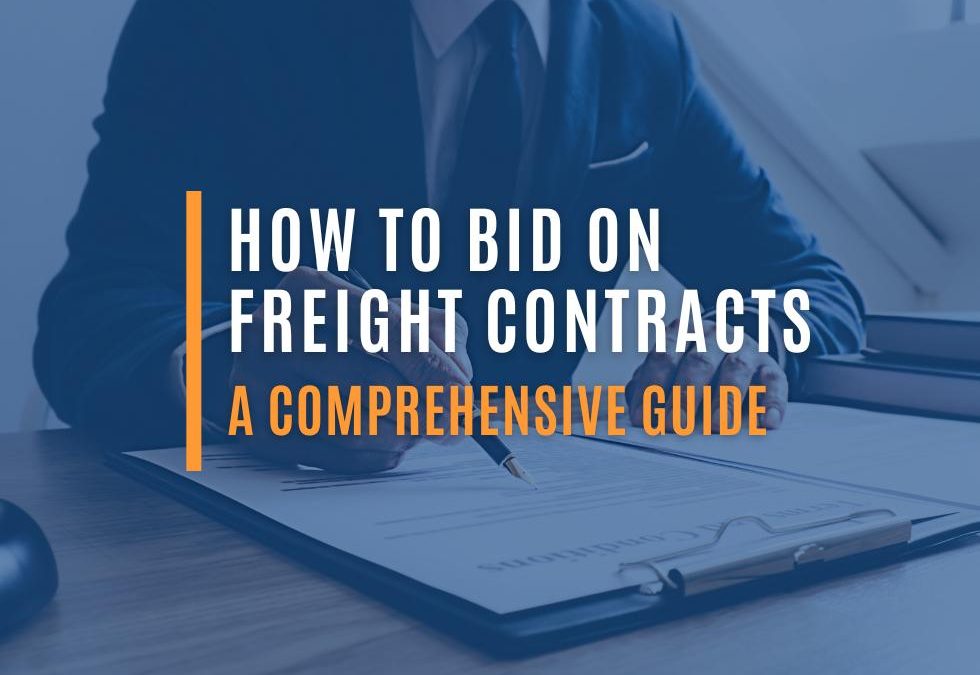Navigating the freight bidding process can be overwhelming, but it’s the key to unlocking consistent revenue as a successful Freight Broker. With over 40 years in the industry, we’ll walk you through how to navigate each stage of the process in this guide: from identifying the right RFPs (Request For Proposal) and modeling costs accurately, to writing compelling proposals and negotiating terms.
If you’re looking to sharpen your bidding strategy, keep reading for practical, proven tactics to help you submit stronger bids and secure more contracts.
What is Freight Contract Bidding?
Before we dive into the practical part of the guide, let’s define what contract bidding is. Freight contract bidding is how Shippers request and review offers from Freight Brokers and Agents to arrange transportation services under agreed terms.
This is a highly competitive process with the goal of winning freight contracts that guarantee business. There are three main types of contracts:
- Spot contracts: short-term agreements used for one-time or immediate shipments, with pricing often based on current market rates.
- Lane-based contracts: focus on specific routes or lanes and typically offer consistent volume over a medium length term.
- Annual contracts (also known as long-term or dedicated contracts): these contracts lock in rates and service agreements for a full year or more, providing greater predictability for both the Shipper and the Agent.
Each contract type requires a tailored bidding strategy to remain competitive and profitable.
Why Effective Bidding Matters
In tight or highly competitive markets, like we are seeing now, a well-executed bid can provide an edge over other Agents by offering the right balance of price, service, and reliability.
Strong bidding strategies also have a direct impact on profit margins. It is important to avoid underpricing and accurately model costs. Agents want to make sure every contract is realistic and profitable.
Additionally, effective bidding supports client retention by demonstrating professionalism, consistency, and a clear understanding of a Shipper’s needs. This also helps build trust and increase the likelihood of long-term partnerships.
Bottom line: Mastering the freight bidding process is not just about winning loads. It is about growing a sustainable and competitive Freight Agency.
How to Bid on Freight Contracts
Bidding on freight contracts is a strategic multi-step process. Each step in this process plays a role in positioning yourself as a reliable, cost-effective partner. Here’s how it typically works.
Step 1: Research Opportunities
The first step is to research high-value RFPs (Request for Proposal) and RFQs (Request for Quote). These can come through load boards, Shipper networks, and industry contacts.
Carefully examine the lanes, shipment volumes, service expectations, and contract duration. Be sure to understand the client’s goals and any special requirements. Also assess lane demand and carrier capacity.
Step 2: Build an Accurate Cost Model
After researching opportunities, build an accurate cost model for each lane or service category to ensure your bid is both competitive and sustainable.
Use historical rate data, market trends, and your carrier network’s capabilities to assess each lane. This helps determine which routes are profitable and align with your operations.
There are also many other factors to consider including: margin targets, risk buffers, linehaul rates, fuel surcharges, and accessorial fees.
Step 3: Develop a Competitive Pricing Strategy
Using your cost model, develop a competitive pricing strategy that balances aggressive rates with sustainable profit margins. Consider offering discounts tied to volume commitments to enhance value while maintaining long-term profitability.
Step 4: Ensure Regulatory and Carrier Compliance
This step is often overlooked, but it can significantly reduce the risk of bid rejection and streamline the rest of the process. You can ensure regulatory and carrier compliance by pre-qualifying carriers in advance. Confirm their insurance, licensing, and surety bonds. If you already have a reliable network of carriers, you’ll be at an advantage and this step will be much simpler.
Step 5: Submit a Persuasive Proposal Document
After the first four steps are complete, you are now ready to craft and your proposal before the dates specified by the Shipper. Present your rates along with supporting details like your service capabilities, technology tools, carrier vetting process, and past performance metrics. Highlight what makes you different, just as you would in a cold call. You can also include a service guarantee and escalation clause.
Step 6: Negotiate if Needed and Finalize Terms
After submitting your proposal, be prepared for follow-up discussions or counteroffers. If you have strong negotiation skills you can help finalize a win-win agreement without compromising your margins (use these 5 secret negotiation strategies for maximum profit).
Step 7: Track and Learn
Whether you win the bid or not, view each submission as a learning experience. Track key details such as pricing, lanes, service requirements, win/loss outcomes, and feedback from Shippers. Analyze this information to refine your future bids and sharpen your overall strategy.
Bonus Tip: Leverage Technology
If you read the steps in our guide and are still wondering how to set rates for lanes or what to charge, you are not alone. These are common concerns for new agents. At Kopf, we do not tell Agents what to charge, but we will say technology is your friend.
For example, Transportation Management System (TMS) software provides valuable data insights, such as historical lane rates, carrier performance, and real-time market trends. This data helps you forecast costs more accurately, identify your most competitive lanes, and avoid bidding on unprofitable routes. You can also use it to highlight operational strengths in your proposal.
All of our Freight Agents receive access to McLeod (TMS), TruckStop, and DAT. Each of these tools helps our Agents set rates and build an accurate cost model.
By incorporating technologies into your bidding strategy, you save time, reduce risk, and submit more competitive, data-driven proposals.
Common Pitfalls and How to Avoid Them
There are two common mistakes in contract bidding and both of these can reduce profit margins and damage client trust.
Underestimating Accessorial Fees
Accessorial fees are the extra charges for services beyond standard pickup and delivery like detention, layovers, liftgate use, or residential delivery. If overlooked or underquoted, these fees can turn a seemingly profitable contract into a financial burden.
Avoid this pitfall by building a comprehensive accessorial fee structure into your cost model. Use historical data and carrier input to anticipate common add-ons for each lane, and clearly outline them in your proposal to avoid disputes later.
Failing to Update Cost Models for Market Shifts
Freight markets are dynamic. They are influenced by fuel prices, seasonality, capacity constraints, and regulatory changes. Using outdated rate data can result in underbidding (and losing money) or overbidding (and losing contracts).
One way to avoid this pitfall is to regularly update your cost models using real-time data from your TMS, market indexes (like DAT or FreightWaves), and carrier feedback. Automate this process where possible to ensure every bid reflects current conditions.
Ready, Set….Win Your Bid!
Mastering the freight bidding process isn’t just about submitting the lowest rate. It’s about building smart, data-driven proposals that balance cost, service, and sustainability. By avoiding common pitfalls, leveraging the right technology, and staying responsive to market changes, your Freight Agency can gain a serious edge in a competitive landscape.
If you’re looking to grow your Agency, consider working with a trusted freight brokerage like Kopf Logistics Group. With deep industry expertise, advanced technology, and a commitment to delivering results, Kopf can help you win more and worry less…all while being a name not a number.
Questions People Also Ask
What is freight contract bidding?
Freight contract bidding is the process of responding to RFPs (Requests for Proposals) or RFQs (Requests for Quotes) issued by Shippers, where brokers submit detailed cost and service proposals. Successful bids balance competitive rates with clear service guarantees to meet Shipper requirements.
How do I win freight contracts?
Winning bids hinge on accurate cost modeling, compelling proposal documents, and proactive follow-up, plus the ability to demonstrate carrier compliance and on-time performance. See our “How to Bid on Freight Contracts” section for a step-by-step approach.
What factors affect freight bid pricing?
Key factors include line-haul rates, fuel surcharges, accessorial charges, margin targets, and volume commitments. You must also account for seasonal and lane-specific demand fluctuations.
Can technology improve my bid success rate?
Yes! Use bid-management platforms and TMS analytics to automate cost calculations, identify optimal carriers, and speed proposal generation, boosting your accuracy and turnaround times.
How do Freight Agents handle carrier compliance in bids?
Pre-qualify carriers by verifying insurance, operating authority, and safety records. Include this compliance documentation in your proposal to reduce bid rejection risk and build Shipper trust.

